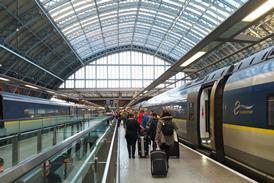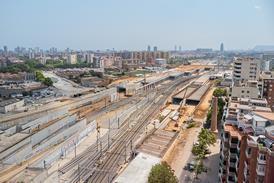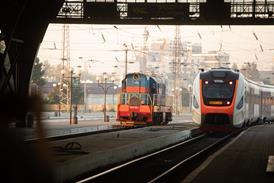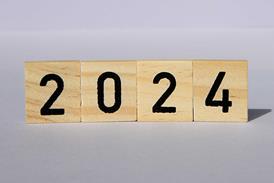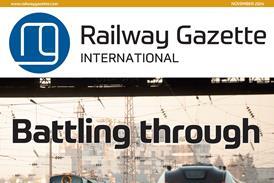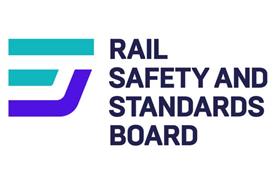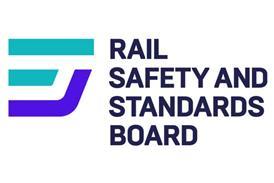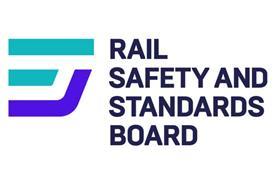INTRO: Charged with breaking even in 2000, Fret SNCF is looking to master costs and boost receipts whilst increasing capacity and improving reliability. Freight Director Armand Toubol outlined his strategy to Robert Preston
Over the last three years SNCF freight traffic has been on an upward trend, rising from 46·5bn tonne-km in 1995 to 52·6bn tonne-km in 1997. According to Freight Director Armand Toubol, the first half of 1998 saw growth beyond expectation in the region of 9%, due largely to a buoyant economy. Still strong up to September, growth then began to tail off to around 3%, but with over 1bn tonne-km being recorded each week. Toubol expects growth of 2% for the year as a whole, and that Fret SNCF will record 53·5bn tonne-km in 1998.
Freight activity is charged with breaking even in 2000 under the SNCF reform programme (RG 3.97 p175), and rising traffic is bringing the issues of capacity and reliability into sharper focus. Admitting that 1998 was not the best year for punctuality, traditionally a strong point for rail, Toubol sees this issue as a major priority.
With a dedicated pool of 1200 electric locomotives in place by the start of 1999 and a measure of priority for its services on the key Lille - Metz - Strasbourg and Metz - Lyon - Marseille corridors, Fret SNCF is working to improve the tracking of its services and react more quickly in case of disruption. A national freight control centre was established in Paris at the end of 1998, which will use an automatic vehicle identification system to track wagons and determine the position of locomotives with GPS.
In negotiations with unions over working conditions, Toubol believes it is important to adopt a ’win-win strategy’ for the benefit of employees and the business as a whole. In its efforts to break even by 2000, Fret SNCF is working to increase efficiency and drive down costs, particularly in areas such as sales administration where the aim is also to offer a better service to the customer. Since June 1998 Fret SNCF staff have, on an experimental basis, been eligible for a commission on the sales that they make.
Boosting capacity
To increase capacity, Fret SNCF is pursuing a number of investment projects, but is also looking to make better use of existing resources. In the latter category, efforts are being made to improve timetabling and diagramming in order to run as many trains as possible to meet demand, in conjunction with projects to maximise the loading of trains and ensure the prompt return of empty wagons. Maintenance procedures are also being revised ’to penalise freight less’ in Toubol’s words.
Long-term investment projects include a joint SNCF/DB electronic air brake programme that should allow longer trains to be operated. The two railways have gone out to tender for a trial system. Longer trains will also require stronger couplers that minimise slack action, and within three years Toubol hopes to raise the maximum permissible length from 750m to 1500m through the use of additional radio-controlled locomotives distributed throughout the train. He stresses that this will require ’a lot of studies’ and that the project is still at an early stage examining safety issues.
Despite productivity improvements and technical innovation, certain limits on capacity will remain and Fret SNCF recognises that investment will be required to relieve long-standing bottlenecks in the national railway system that could limit future growth. Saturation point is being reached around Lyon, Nîmes, Montpellier, Bordeaux and Modane on the Italian border, and the key Grande Ceinture belt line to the north and east of Paris is also full. SNCF is working on investment proposals for presentation to Réseau Ferré de France, which as the owner of the national railway infrastructure will be responsible for future development.
RFF now also owns the intermodal terminals used by SNCF trains, and will be responsible for implementing the development plans that are being drawn up by its freight division. On July 23 1998 Transport Minister Jean-Claude Gayssot received a report on the development of the intermodal sector commissioned from Pierre Perrod, President of the National Transport Council. In making the report public, Gayssot expressed the wish that RFF, SNCF and intermodal operators would before the end of 1998 present him with details of the ’concrete measures’ that they expected to take in order to give intermodal ’the place that is rightfully its own’.
Intermodal set for change
Amongst its 10 recommendations, the Perrod report highlighted the need for more efficient terminal operation, as well as a more aggressive attitude on the part of SNCF towards developing intermodal business. With France looking to play a key role in European rail freight, the report also recommended joint action with RFF to tackle bottlenecks and develop new terminals on the national network. Perrod believes that Fr500m will be required from the government over the next five years to modernise terminals at Lomme (Lille), Valenton, Vaires, Avignon, Champfleury, Perpignan, Montpellier, Marseille and Bayonne, with Fr250m necessary over the same period to develop ’super terminals’ at Dourges near Lille, St Mard east of Roissy, Hourcade outside Bordeaux and near Miramas.
What Toubol describes as now ’a mode in its own right’ is obviously a strategic priority for Fret SNCF, whose top 100 customers in 1997 included intermodal operator CNC in first place with 389856 wagon movements, followed by Novatrans in second place with 186592 and Intercontainer-Interfrigo in eighth place with 42672. But the ’real challenge’ is to operate at a profit in a market where prices are determined by the road haulage industry, which often forms part of the total transport package. Service quality is another issue, and Fret SNCF has adopted the categories of ’gold’, ’silver’ and ’bronze’ for certain intermodal services, with arrival within 10min of the scheduled time guaranteed for gold trains.
An international business
Toubol believes that the European railway scene ’is changing very quickly now’. With international traffic accounting for 50% of Fret SNCF’s turnover, developments outside France could have a major impact on business performance, and Toubol firmly believes that co-operation rather than competition is the way ahead.
He cites the example of the first Trans-European Rail Freight Freeway (RG 5.98 p313), the Belifret corridor established by SNCB, CFL, FS and RFF on January 12 1998 between Muizen in Belgium and Gioia Tauro in Italy, and extended to Spain and Marseille on May 24. Belifret is now ’working well’, with the number of trains using the 20 designated paths up from three to five a day. A one-stop shop for the planned Terff from Glasgow in Great Britain to Sopron in Hungary, with branches from Le Havre and Dunkerque, was expected to be able to quote track access prices by the end of January.
Co-operation between neighbouring railways will involve a certain amount of interoperability. Discounting any possibility of a freight merger between SNCB and SNCF, Toubol points to the advantages of the 30 tri-voltage Astride locomotives, currently undergoing trials for operation into Belgium and Italy. Closer co-operation with Renfe of Spain is also on the cards, and Toubol hopes to operate into Germany the 30 tri-voltage members of the fleet of 120 ’very basic, very reliable’ freight locomotives ordered in July 1998.
CAPTION: Much long-haul SNCF freight is now in the hands of modern Sybic locomotives. This one is hauling a containerised freight between Culmont-Chalindrey and Dijon - one of the key cross-country freight arteries
Fret SNCF businessunits
The restructuring of freight operations as seven business units, a process which began in 1988, is believed to have a made a significant contribution to recent traffic growth. Each having their own network of regional sales offices for closer contact with the customer, the business units have enabled SNCF to attack new markets and offer total transport packages, whilst managing retreat from unprofitable activities.
Turnover at Fret SNCF in 1997 was Fr11·9bn, up 5·7% on 1996 with traffic up 8·9% at 52·6billion tonne-km. Of this total, international traffic accounted for 25·4billion tonne-km, including 10·2billion tonne-km of transit traffic. The table below describes performance at each business unit in 1997.
Tonnes Tonne-km
million billion
Coal & Steel 34·7 10·5
Wood, Paper, Glass & Construction Materials 24·8 7·4
Intermodal & Parcels 21·5 13·8
Petrochemicals, Chemicals & Non-Ferrous Metals 20·7 7·2
Agriculture 18·4 6·9
Consumer Products 8·0 4·0
Automotive, Abnormal Loads & Military Traffic 3·7 2·3
Total 132·1 52·6

